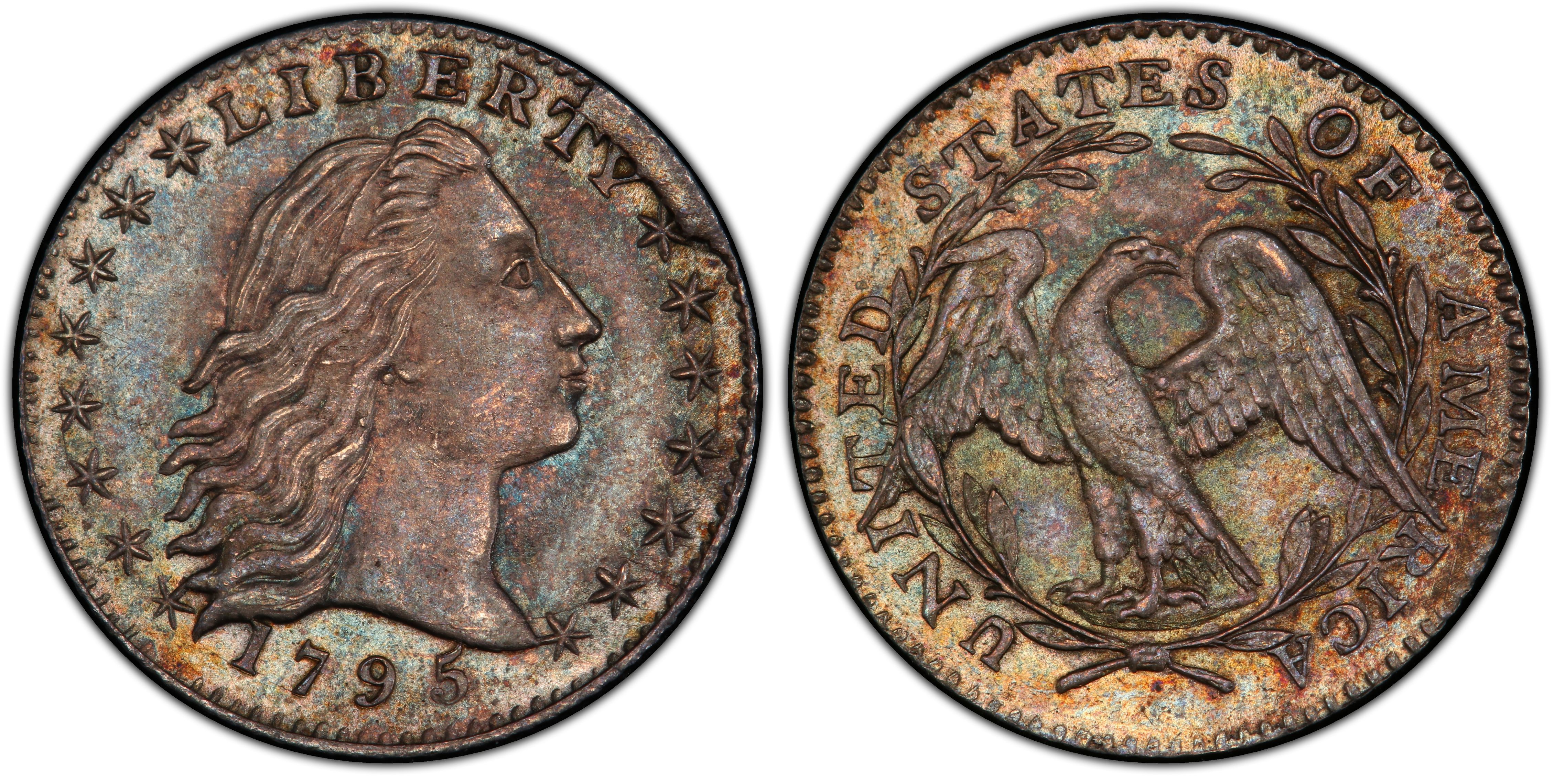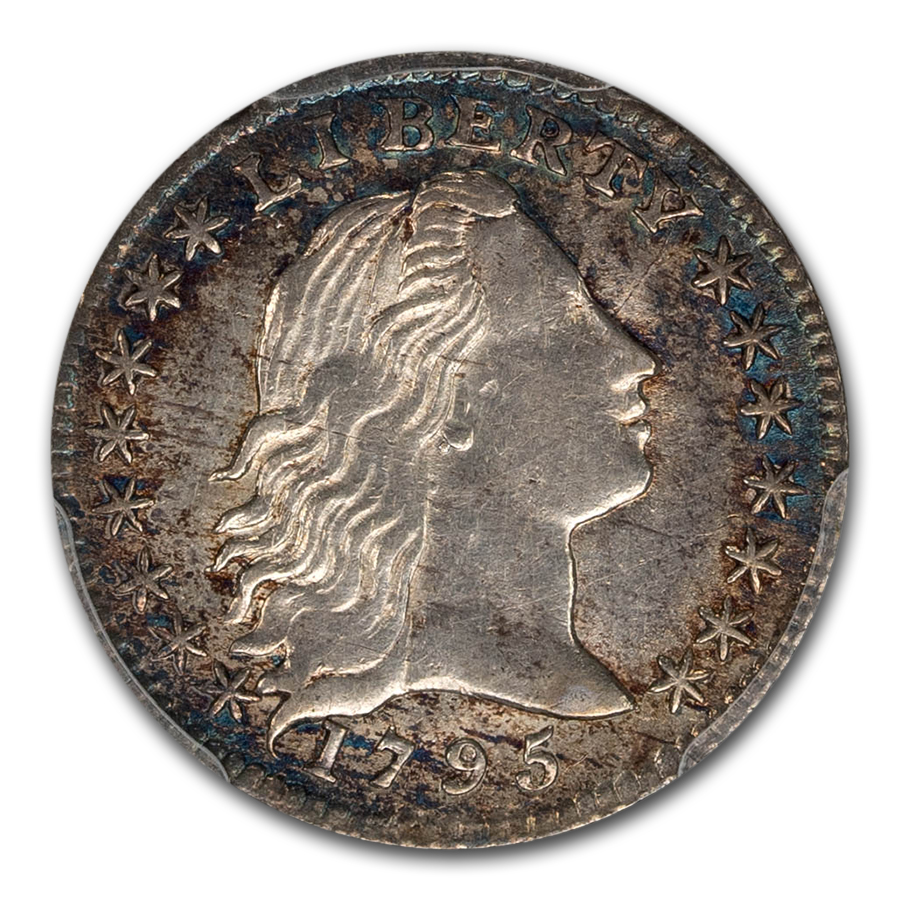Complete Coin Guide
Table Of Content
- Flowing Hair Half Dime H10C - Certified NGC XF Detail (EF) - Rare Date Coin
- Flowing Hair Half Dime H10C - Certified PCGS AU Details - Rare Date Coin!
- Flowing Hair Silver Half Dime H10C ANACS G 04 Details - Damaged & Cleaned
- Shop on APMEX
- Flowing Hair Half Dime H10C - Certified NGC Fine Details - Rare Date Coin!

The wreath surrounds her and “UNITED STATES OF AMERICA.” The design is beautiful in its simplicity. It is thought that 7,756 of these 1794-dated Half Dimes were actually struck in March of 1795. APMEX takes pride in being one of the most innovative companies in our industry.
Flowing Hair Half Dime H10C - Certified NGC XF Detail (EF) - Rare Date Coin
So whether you’re looking for information on the latest hot collectible, want to know how to care for your collection, or want to find out more about the collector guide, we’ve got you covered. Overall, I would recommend the 1795 Flowing Hair Half Dime to any collector who is interested in early American coinage. It’s a beautiful and historic coin that is sure to be a great addition to any collection. The image of Miss Liberty with flowing hair is iconic and instantly recognizable.
Flowing Hair Half Dime H10C - Certified PCGS AU Details - Rare Date Coin!
Despite their rarity, these coins are not as expensive as the larger denominations from the same era. Nonetheless, these coins remain in high demand with type set collectors and those pursuing examples of early American coinage. Over 80% of all 1795 half dimes are from three of these varieties, and the rest are very rare.
Flowing Hair Silver Half Dime H10C ANACS G 04 Details - Damaged & Cleaned
Unusually toned Flowing Hair half dollar sells for just over 3k - Coin World
Unusually toned Flowing Hair half dollar sells for just over 3k.
Posted: Sat, 07 Mar 2015 08:00:00 GMT [source]
The “half disme,” which evolved to “half dime,” was the smallest silver denomination authorized under the Coinage Act of 1792. The very same year, the famous 1792 Half Disme would be produced as the first representative of the denomination and the very first coin struck by the United States government. The Flowing Hair Half Dimes would follow, carrying the dates 1794 and 1795, although all pieces were struck during the latter year. The short-lived series carries great importance as one of the earliest examples of American coinage. Robert Scot was instructed to create a new, uniform design for the current silver denominations.
On high grade pieces, wear will first show on the hair to the left of the ear, the forehead and on the eagle’s head, breast and the tops of its wings. No Proof examples of the Flowing Hair Dollar are known, but there is one 1794 coin with reflective surfaces and a full strike from properly aligned and undamaged dies. This piece contains a silver plug and is referred to more recently as the “Cardinal Dollar.” It is considered a Specimen and is believed by some to be the first silver dollar struck by the U.S. Some planchets actually weigh too much and needed to be “adjusted.” These coins have what are called “adjustment marks” on the planchets. Adjustment marks are long straight lines on the coin where a file was drawn across the coin to reduce the amount of silver in the coin itself. There was an American eagle with wings spread holding a wreath in her talons.

The word LIBERTY is centered at the top inside a denticled rim, with the date centered at the bottom. Fifteen six-point stars split eight to the left and seven to the right along the rim between the top and bottom text. Grand Collector is a one-stop website for guides and reviews for collecting as a hobby.
The first half dimes to be struck in the United States were the famous half dismes of 1792. These coins were produced before an actual mint building had been erected, but they were made by official Mint personnel. A total of 1500 were issued from dies which are thought to have been designed and engraved by British medalist William Russell Birch. The striking process was overseen by Adam Eckfeldt, a Mint officer, and John Harper, a machinist who lived nearby the proposed site of the new mint. The coins were made in the cellar of Harper’s building at Sixth and Cherry Streets, andlegend has it that at least some were coined from silverware provided by Martha Washington. Ten different die varieties have been identified for this issue, with only two of these considered scarce.
Shop on APMEX
The 1795 Flowing Hair Half Dime is an early coin produced by the United States Mint.2. Its small size and intricate design make it a fascinating piece of American numismatic history.3. Understanding the current market value and factors that affect it can help collectors decide about adding it to their collection.
The first of the very limited “Half Disme” of 1792, created especially for George Washington, reportedly used silver from a silver tea service that belonged to Martha. Due to its very limited mintage, the 1792 Half Disme is really a pattern coin and not a regular issue. We provide all of our customers with a refund, return and / or exchange on everything we sell including all bullion and certified coins. Small numbers of half dismes were made in 1792, a tangible result of the efforts of Benjamin Franklin, Thomas Jefferson, and Alexander Hamilton to move the United States to a decimal coinage system. The 1792 coins are sometimes collected as contract issues or patterns, though wear on the coins and documentary evidence indicates that they did circulate.
His design was different than that found on Birch’s 1792 half dismes (the spelling of “disme” would gradually evolve to “dime.” On the 1792 coins, the denomination is spelled HALF DISME). Scot’s design features a head of Liberty facing to the right with distinctive flowing hair. Fifteen stars, arranged 8×7, surround the head with the date below and the word LIBERTY above. On the reverse, an eagle stands amid an olive branch with the legend UNITED STATES OF AMERICA around it. There is no indication of this coin’s value on either side, nor would there be until the Capped Bust design was adopted in 1829.
There are 15 stars surrounding, arranged eight to the left and seven to the right. The reverse design features an eagle with its wings outstretched, perched on an open wreath. The inscription UNITED STATES OF AMERICA appears around the outer edge of the coin. Notably, the denomination does not appear anywhere within the design, as the Mint considered the coins identifiable by their size and weight. Of the two dates in the Flowing Hair half dime series, the 1795 is more often seen than the 1794.
On the obverse, a youthful Liberty faces right, head held high and long hair flowing unfettered down the back of her neck. The word LIBERTY is centered at the top inside a dentilled rim, with the date centered at the bottom. Fifteen six-pointed stars split eight to the left, seven to the right along the rim between the top and bottom text, the number representing the states then in the Union. The obverse had a simple Miss Liberty facial design, looking upward, and facing to the right. Above her was the motto “LIBERTY” and below her was the date “1794.” She is surrounded by 15 stars – 8 to the left and 7 to the right. On the obverse, a youthful Liberty faces right, head held high, with long hair flowing unfettered down the back of her neck.
It’s also a great example of the work of Robert Scot, one of the most important early American coin designers. This means that collectors who can find a well-preserved example will have a valuable addition to their collection. While it may not be the rarest coin out there, it is certainly a valuable one that offers a glimpse into the early days of American coinage.
Others range from rare to extremely rare, the latter being V-10/LM-2, with less than ten pieces known to exist. This represents one of the prized rarities within the spectrum of die varieties for this denomination. Just shy of 1,500 Flowing Hair half dimes have been certified; most are the 1795 issue.
We take pride in offering high-quality and authentic content that is carefully researched and reviewed, so you can trust the information you find on our website. The 1794-dated obverse dies would be continue to be utilized for production until they were worn out and replaced by the 1795-dated obverse dies. As the reverse design of the coin remained unchanged, these could be used interchangeably with different dated obverse dies. Production would continue for the remaining months of 1795, until a new obverse design was introduced in the following year.
However, a number of nice, high-grade examples have survived, including a few Gems. As one would expect, the quality of strike for 1794 Flowing Hair half dimes is generally poor. In fact, the United States Mint had considerable trouble striking coins of this denomination until the 1830s. It is very hard to locate a 1794 half dime which is sharply detailed on the hair of Liberty. In addition, the eagle’s breast feathers are very often flat and indistinct.
Comments
Post a Comment